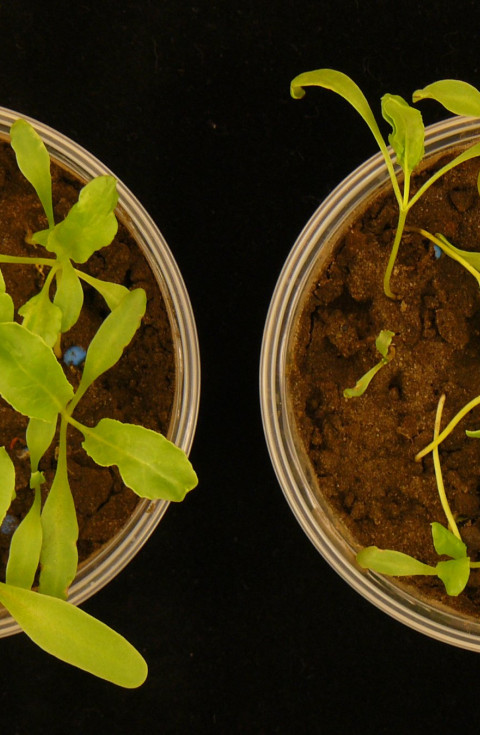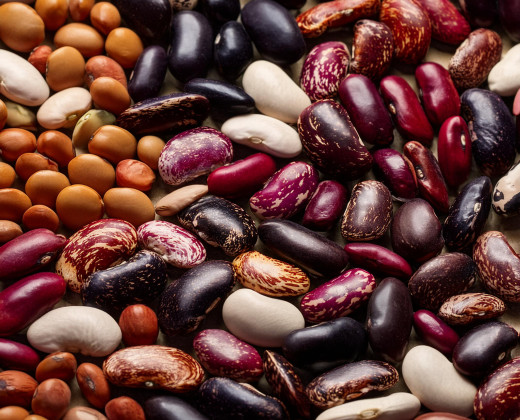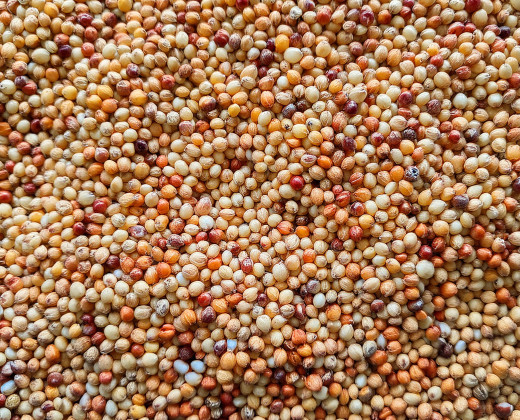Back to Roots

We need to produce food for a growing world population, with less pesticides and fertilizers on less agricultural land area.
Micro-organisms that live on or in the roots of plants may help to solve these problems: they can stimulate seed germination, promote plant growth and offer protection against drought, pests and diseases. But which micro-organisms are most effective? And are microbial consortia more effective than ‘single’ microbes?
Wild ancestors of crop plants and their microbial partners may hold the key to answering these questions. Compared to their cultivated crop relatives, they are thought to have a higher
microbial biodiversity and stronger microbial support functions that have co-evolved with their wild hosts.
The aim of the BackToRoots research programme is to enhance plant growth and productivity by exploring, explaining and ultimately exploiting these 'ancestral' microbial communities.
Road Map to Rewilding Plant Microbiomes
Plant domestication has changed how plant microbiomes are formed. By studying wild plants and their native environments, we can learn how to bring back or stimulate beneficial microorganisms that help plants grow, develop, and stay healthy. In Back to the Roots we're introducing new ideas and concepts in plant microbiome research. Using community ecology theory, we can better understand the different ecological processes—in particular selection, dispersal, drift, and diversification—that shape the plant microbiome. This knowledge helps us to disentangle how these processes interact and influence plant health.
In the figure below, you can see all the different crop species we are working on together with colleagues nationally and internationally: tomatoes, potatoes, common bean, rice, sorghum and millet.
Tomato
Tomatoes are among the most valuable vegetables globally. According to the FAO, tomatoes ranked as the most produced vegetables with 186 million tonnes in 2022 (FAO, 2023). They are renowned for their nutritional value, being rich in vitamins and minerals such as calcium, phosphorus, and iron. Tomatoes have undergone significant phenotypic and genetic changes during the transition from their native habitats to diverse agricultural and horticultural production systems. This makes them an excellent plant model for exploring the genetic and chemical basis of microbiome assembly and to investigate the functional potential of the plant microbiome.

Common Bean
Common bean is an important legume consumed by people from all income levels. Its demand is increasing as more consumers shift to plant-based diets. Common beans can be grown as a vegetable crop for fresh pods or as a pulse crop for dry seeds. They are enjoyed in various forms, including fresh foliar vegetables, fresh green pods and dry grains. Globally around 16.7 million tons of dry beans are produced on 23 million hectares (FAO, 2024). Because of its wide availability and nutritional properties, common bean has now become one of the most important crops consumed worldwide.

Potato
Potato originated and was first domesticated in the Andes Mountains of South America.
In terms of human consumption, potato is the third most important food crop in the world, following rice and wheat (FAO, 2023). Over a billion people worldwide consume potatoes, with global total crop production exceeding 300 million metric tons.
There are more than 4,000 varieties of native potatoes, primarily found in the Andes, varying in size and shape. Additionally, there are over 180 wild potato species. Although these wild species are too bitter to eat, their biodiversity represents an enormous resource for diverse traits including natural resistances to pests, diseases, and adverse climatic conditions.

Rice
Rice is a staple food for more than half of the world’s population. Worldwide, more than 3.5 billion people depend on rice for more than 20% of their daily calories. This crop offers a good nutritional value with high content in magnesium, phosphorus, manganese, selenium, iron and folic acid. The genetically diverse germplasm and available wild relatives makes rice an excellent model to study the impact of domestication on microbiome assembly and functioning.

Sorghum
Sorghum ranks as the fifth most popular cereal crop globally and serves as a staple food for over 500 million people in Africa and Asia (FAOSTAT, 2021). Sorghum was most likely first cultivated as a food source in the Sahelian belt of Africa and domesticated in central eastern Sudan about 6000 to 4000 years ago. Besides providing essential calories, sorghum is used as fibre, forage, and fuel. Being such an important crop for subsistence farming communities, investigating the role of the microbiome in growth and tolerance to (a)biotic stresses has become a major focus of our research program.

Millet
Pennisetum glaucum, commonly known as pearl millet, is a staple cereal in sub-Saharan Africa and parts of India. It is well-adapted to the dry Sahelian and semi-desert regions and also thrives in savannas.

Wheat
Wheat is one of the world's most important crops, playing a crucial role in global food security. It provides a major source of carbohydrates, proteins, vitamins, and minerals, feeding billions of people worldwide. Wheat's adaptability to diverse climates and its high yield potential make it a staple food in many regions. However, wheat production often relies heavily on agrochemical inputs, which can harm the environment when used excessively. Understanding and optimizing the interactions between wheat plants and their rhizosphere microbiome is essential for sustainable agriculture.









